Richard O. Cowan, “Church Teachings, Policies, and Programs: Impact on the Saints in Canada,” in Canadian Mormons: History of the Church of Jesus Christ of Latter-Day Saints in Canada, ed. Roy A. and Carma T. Prete (Provo, UT: Religious Studies Center; Salt Lake City: Deseret Book, 2017), 126-143.
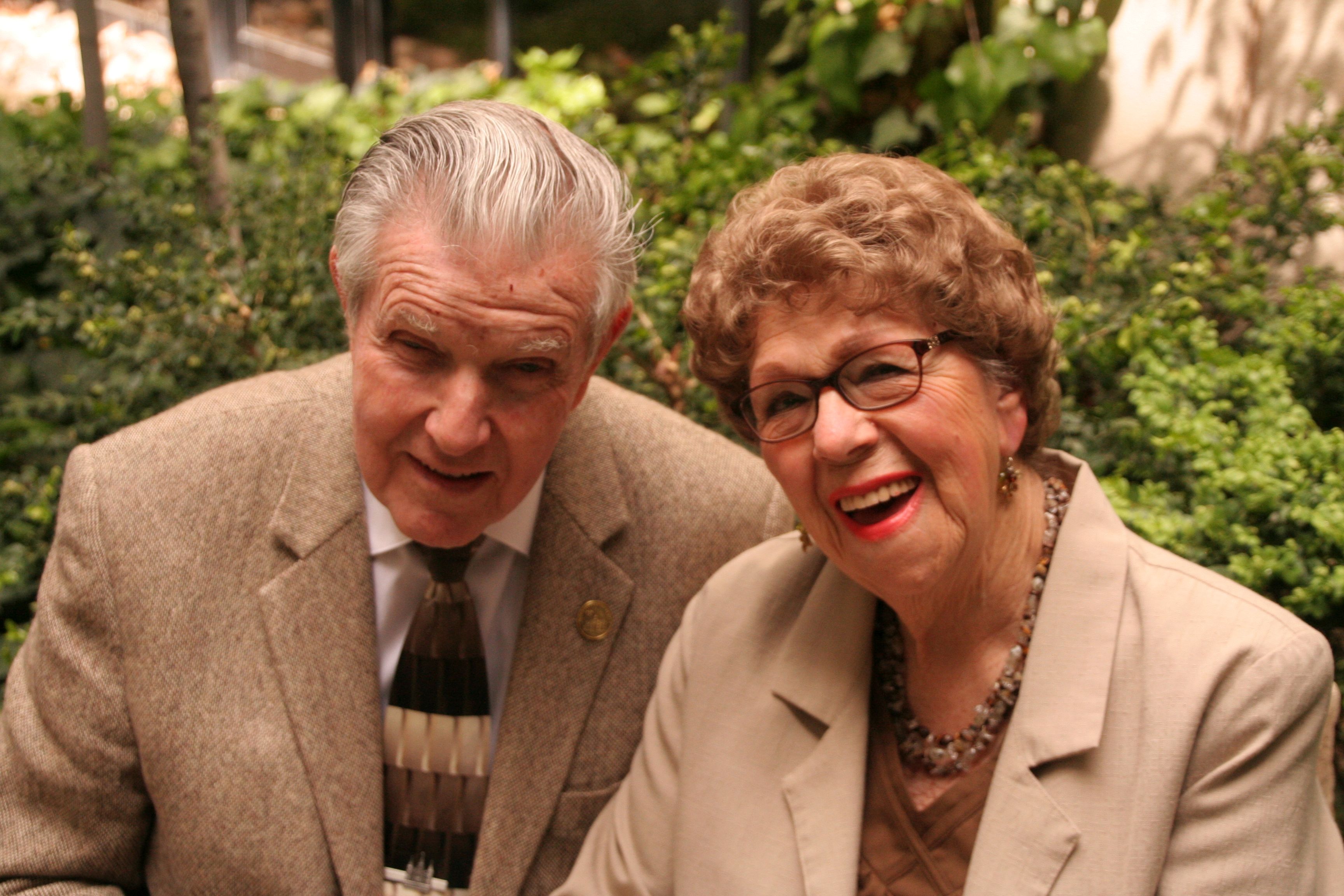
Richard O. Cowan received his PhD in history at Stanford University in 1961. During his graduate studies, he was one of four visually impaired students in the United States to receive an award from President Dwight D. Eisenhower. Upon graduation, Cowan joined the religion faculty at Brigham Young University in Provo, Utah. In 1965, he was honoured as BYU’s Professor of the Year and over the years has received several honours for his teaching and research. He retired in 2014, after fifty-three years of service. He has authored a dozen books and numerous articles in Latter-day Saint theology and history, particularly on the twentieth century. He was chair of the Church Gospel Doctrine Writing Committee for ten years and serves as his stake’s patriarch. He and his wife, Dawn Houghton, are the parents of six children and have twenty-two grandchildren and two great-grandchildren. (Richard Cowan)
 Heinrich Hoffman, Christ and the Rich Young Ruler. The gospel invites people of all ages to come unto Christ. "Come unto me, all ye that labor and are heavy laden," said Jesus, "and I will give you rest" (Matthew 11:28). The purpose of Church policies and programs is to help people respond to the Saviour's invitation and recieve the promised blessings. (C. Harrison Conroy Co.)
Heinrich Hoffman, Christ and the Rich Young Ruler. The gospel invites people of all ages to come unto Christ. "Come unto me, all ye that labor and are heavy laden," said Jesus, "and I will give you rest" (Matthew 11:28). The purpose of Church policies and programs is to help people respond to the Saviour's invitation and recieve the promised blessings. (C. Harrison Conroy Co.)
Latter-day Saints often cite the Lord’s affirmation that “this is my work and my glory—to bring to pass the immortality and eternal life of man” (Moses 1:39). This is only possible through faith in the Lord Jesus Christ and his infinite Atonement. “The term ‘Atonement’ refers to Jesus Christ’s suffering in Gethsemane and His death on the cross. He suffered the full weight of the pain and anguish of the sins of all mankind—thus satisfying the eternal law of justice—so that those who repent and accept Christ as their Savior will not have to experience the same punishment.”[1] His Resurrection paved the way for all humanity to be resurrected (1 Corinthians 15:20–22). The Church and its programs have been provided to help individuals qualify for eternal life, which is to dwell in the presence of God. As a noted scholar has observed, “All that is taught and practiced within the Church has meaning and efficacy only because of the Savior and His infinite Atonement for all mankind.”[2]
While the doctrines of salvation and ordinances based on eternal verities have not changed, policies and programs have been adapted from time to time under the direction of modern-day prophets and apostles to better carry out the mission of the Church. Since the Church is a highly centralized organization, such changes have had a significant impact on the experience of its members in all parts of Canada and across the world, and provide the necessary background to understanding developments, sometimes only alluded to, in the chapters covering the history of the Church in various regions of Canada.
Gathering to Zion
In addition to the mission of preparing for the salvation of Heavenly Father’s children, another objective of the restored Church is to help establish Zion, or to prepare a people worthy to meet the Lord at the time of his Second Advent. Early revelations directed the Saints to gather together in order to “prepare their hearts” and to be able to withstand the “tribulation[s] and desolation[s]” of the last days (D&C 29:8), but also so that their example and “light may be a standard for the nations” (D&C 115:5–6). Joseph Smith also declared, “The main object of the gathering in any age was to build unto the Lord a house whereby He could reveal unto His people the ordinances of His house and the glories of His kingdom.”[3] These “ordinances,” or sacred ceremonies, will be considered later in this chapter.
During the nineteenth century, converts were urged to gather to Zion—meaning an often difficult move to “the tops of the mountains” in Utah and adjoining parts of western America. This policy had a profound impact on the early history of the Church in Canada. As the chapter on early preaching in eastern Canada has shown, early converts in the period 1832–53, numbering about 2,500, joined with the Saints in such places as Kirtland, Ohio; Far West, Missouri; and Nauvoo, Illinois, and then moved west with the migration of the general body of the Church, leaving eastern Canada essentially devoid of a Mormon presence for at least forty years.
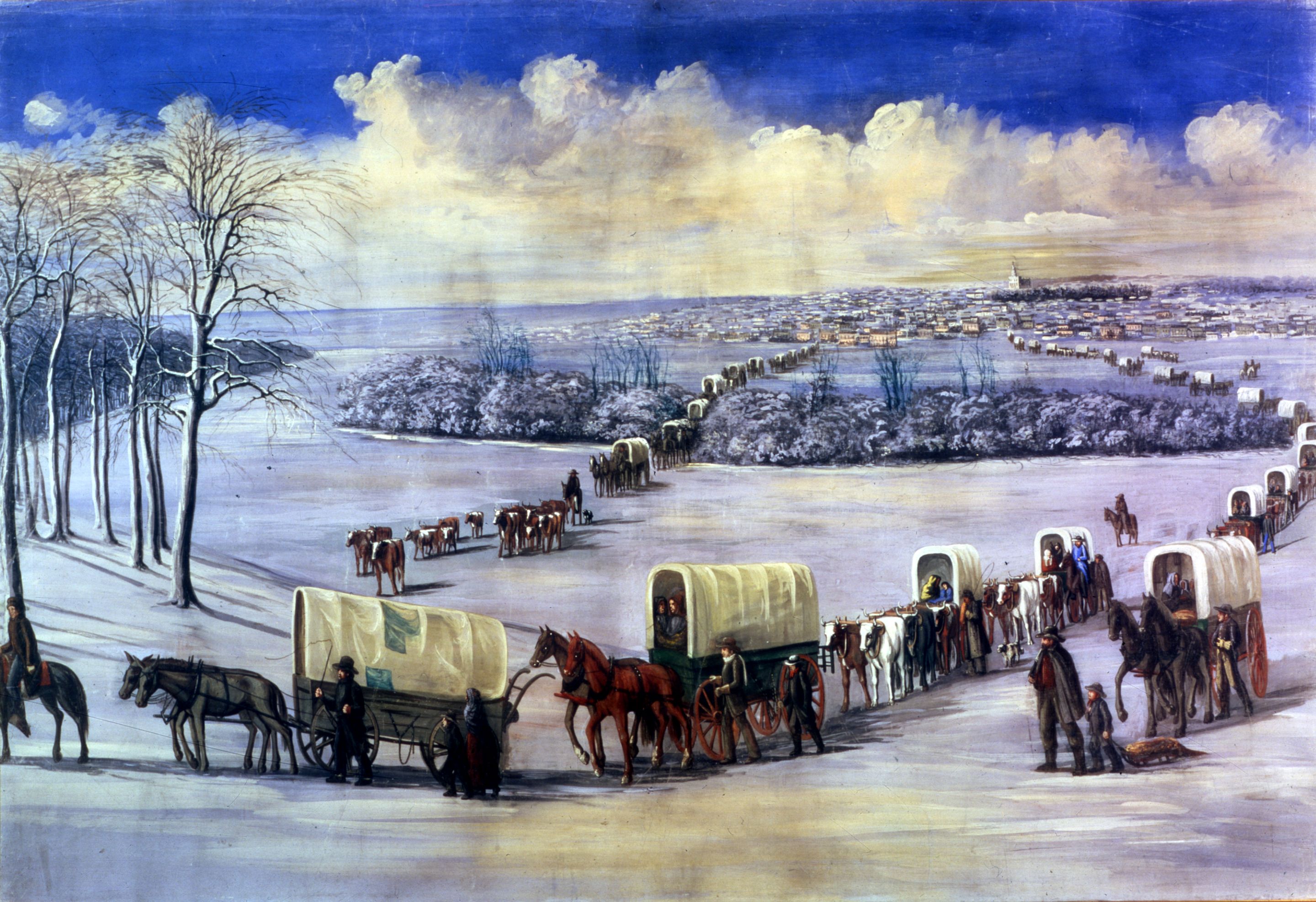 C. C. A. Christensen, Crossing the Mississippi on the Ice. Forced to flee from their homes, Latter-day Saints, under the leadership of Brigham Young, turned their faces to the west, where they hoped to establish Zion in the tops of the Rocky Mountains. (Courtesy of Brigham Young University Museum of Art. All rights reserved.)
C. C. A. Christensen, Crossing the Mississippi on the Ice. Forced to flee from their homes, Latter-day Saints, under the leadership of Brigham Young, turned their faces to the west, where they hoped to establish Zion in the tops of the Rocky Mountains. (Courtesy of Brigham Young University Museum of Art. All rights reserved.)
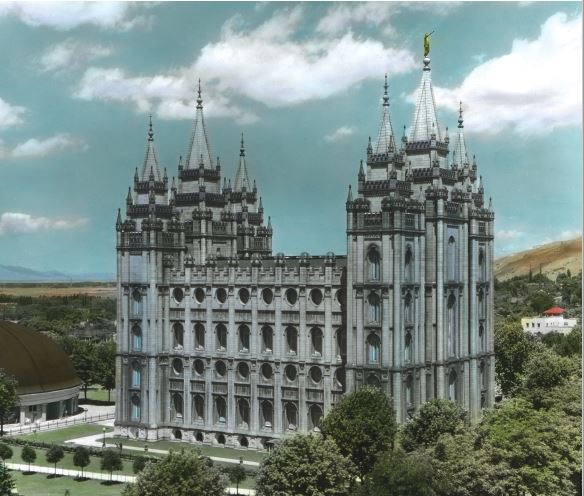 The Salt Lake Temple, built by Mormon pioneers, was dedicated in 1893. In temples, Latter-day Saints receive their highest spiritual blessings, including eternal marriage, allowing families to be together forever. (IRI)
The Salt Lake Temple, built by Mormon pioneers, was dedicated in 1893. In temples, Latter-day Saints receive their highest spiritual blessings, including eternal marriage, allowing families to be together forever. (IRI)
But, beginning in the early twentieth century, Church leaders increasingly counselled the Saints abroad to stay where they were and build up the Church in their homelands. President Joseph F. Smith realized that strengthening their homelands would require providing such support as temples to these scattered Saints. As early as 1901, he acknowledged, “I foresee the necessity arising for other temples or places consecrated to the Lord for the performance of the ordinances of God’s house, so that the people may have the benefits of the house of the Lord without having to travel hundreds of miles for that purpose.”[4] In this spirit, he announced in 1913 plans to construct a temple in Alberta.
Church leaders continued to discourage gathering. A 1921 editorial in the Millennial Star declared, “The Counsel of the General Authorities to the yet ungathered Saints is not to flock Zionward under existing conditions; but to remain in the countries where they now dwell.” Those who “have home and employment especially, should stay and help build up the Lord’s work in the various missions and conferences and branches, strengthening the hands of the elders and other missionaries labouring among them.”[5]
In Canada, while members were aware of these instructions, in actual practice the gathering continued piecemeal in one form or another. With the foundation of the Mormon settlement in Cardston, Alberta, in 1887 and its subsequent development (particularly after the dedication of the temple there in 1923), southern Alberta, as well as Utah, became a place of gathering for Canadian Saints. In both Manitoba and Saskatchewan, early leaders in the twentieth century experienced the difficulty of building up local congregations when so many people continued to move to either Utah or Alberta. In the Winnipeg Branch in March 1923, for example, George Henry Firby and his wife, Bessie, moved to make their home in Salt Lake City, Utah,[6] and in August, John E. Hutchinson, his wife, Mary Jane, and his son, George William, departed from Winnipeg to move to Alberta, followed by their daughter Lorine in October.[7] In May 1935, G. Gordon Whyte, president of the Regina Branch, wrote of his discouragement about the lack of progress of the branch due in part to many branch members moving to areas in the West where the Church was stronger. “In the last two or three years,” he wrote, “forty-five Saints have moved away from here to the west. At present we have thirty-six members. This continual migration makes it difficult to build a permanent place of gathering for the Saints.”[8]
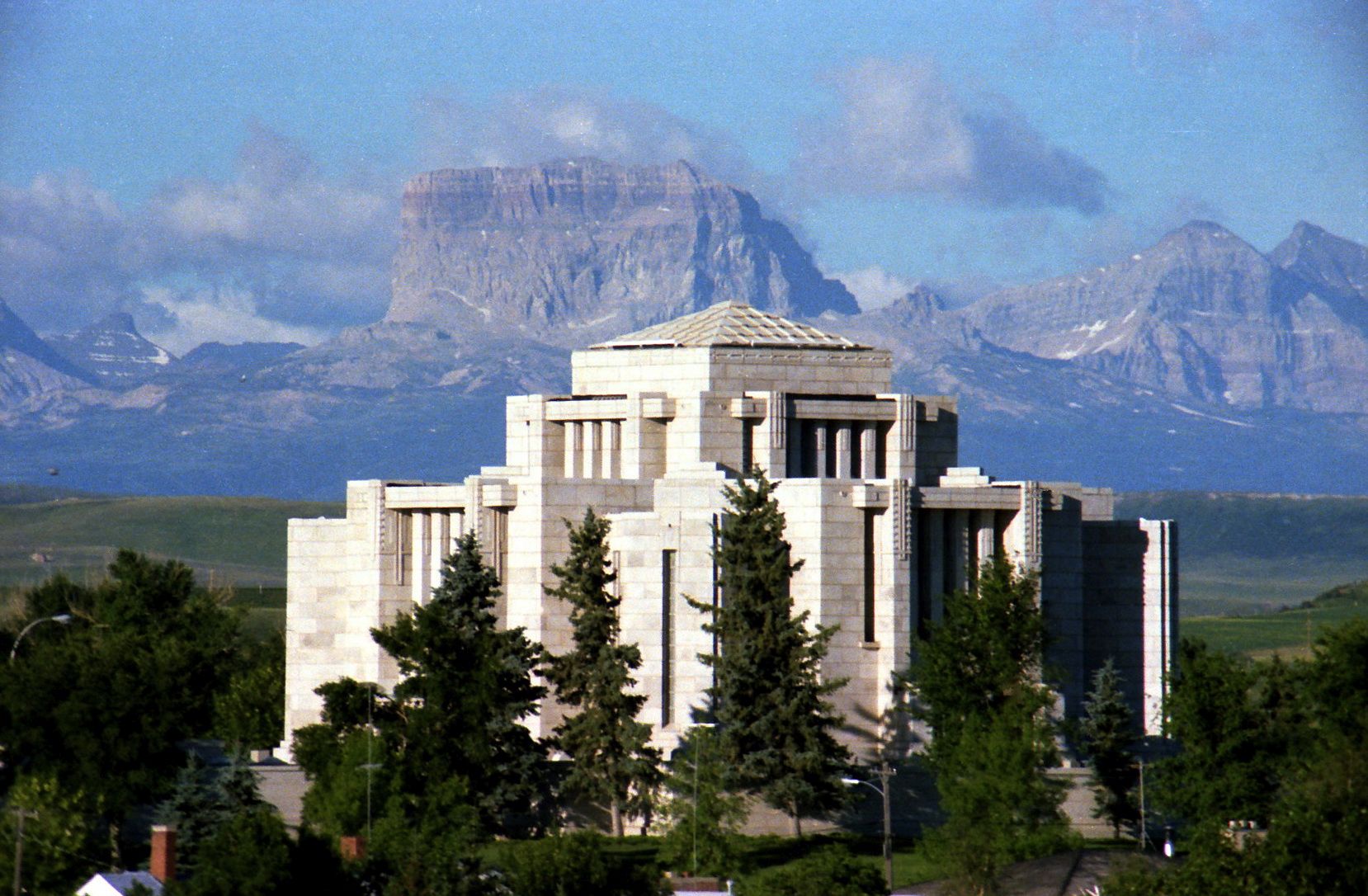 With the dedication of the Cardston Alberta Temple in 1923, Latter-day Saints in Canada had a second gathering place outside Utah to which they could go to receive temple ordinances. This classic photo, showing Old Chief Mountain in the background, was taken by Walter A. Meyer in 1978. The Cardston Alberta Temple has since been designated as a national historic monument. (Walter Meyer)
With the dedication of the Cardston Alberta Temple in 1923, Latter-day Saints in Canada had a second gathering place outside Utah to which they could go to receive temple ordinances. This classic photo, showing Old Chief Mountain in the background, was taken by Walter A. Meyer in 1978. The Cardston Alberta Temple has since been designated as a national historic monument. (Walter Meyer)
Significant international growth of the Church did not come until the later decades of the twentieth century. As late as 1950, only 8 percent of Church members lived outside of the United States and Canada; by the end of the century, however, a majority of the Saints lived abroad.[9] By the advent of the twenty-first century, “gathering” did not involve so much geographical movement to a central location but rather people gathering spiritually out of the world to the stakes of Zion (see D&C 133:14). A group of adjacent local congregations—wards and branches—form a stake. Using the metaphor of a large tent, Isaiah referred to “stakes” as a source of strength in the Lord’s work (see Isaiah 54:2). Stakes provide the full Church program under local leadership and are viewed as a “defense” and a “refuge” against the spiritual and temporal storms of contemporary life (D&C 115:6). In Canada, the first stakes outside Alberta were formed in Toronto and Vancouver in 1960.
But the practice of physically gathering to areas with a large concentration of Church members has continued to some degree to the present, particularly among young people, who have gathered to Brigham Young University campuses in Utah and Idaho or to universities in Alberta, which have strong institute programs, for education and perhaps the opportunity to meet potential spouses whom they could marry in the temple. Families with adolescent children have also been attracted to Alberta for economic reasons and to have a stronger Church environment for raising their children, while others have gathered to the Cardston area, and other towns in southern Alberta near the temple, as a desirable retirement location.[10]
Latter-day Saints in these areas of early gathering played a key role in the subsequent history of the Church. For example, many left Utah following World War I in search of improved economic opportunities, at first to southern California but later to other areas such as the US Pacific Northwest, the Midwest, and the Atlantic Seaboard. As recently as the 1970s, most Church leaders in these areas were imports from the Intermountain West.[11] As Utah is to the United States so southern Alberta is to Canada. The Mormon towns of southern Alberta might well be regarded as the northern boundary of the Mormon heartland. Especially since the end of World War II, members from this area have given strength to such centres as Calgary and Edmonton and, to a significant extent, throughout Canada. Greg Melchin, a prominent Latter-day Saint in Calgary, affirmed, “It would be hard to replace the strength, training, and experience of this core that emanated from southern Alberta to influence all of Canada.”[12]
Family Focus
Marriage and the family constitute a key focus for the LDS Church. These principles have been important since the beginning. In the Garden of Eden, the Lord commanded Adam to “cleave unto his wife” in order that they might become “one flesh” (Genesis 2:24). The Master referred to these words and added, “what therefore God hath joined together, let not man put asunder” (Mark 10:9). Paul similarly declared, “neither is the man without the woman, neither the woman without the man, in the Lord” (1 Corinthians 11:11).
Modern pronouncements, which Latter-day Saints accept as scripture, echo the same emphasis. “Marriage is ordained of God” so that “the earth might answer the end of its creation” (D&C 49:15–16). Therefore the Lord commanded: “Thou shalt love thy wife with all thy heart, and shalt cleave unto her and none else” (D&C 42:22). Parents were admonished to teach their children to live righteously (D&C 68:25, 28). Joseph Smith taught that the family relationship will also continue into the eternities. To attain the highest degree in the celestial kingdom, the Prophet declared that a person must enter “the new and everlasting covenant of marriage” (D&C 131:1–2).
As indicated in the sidebar, since the 1960s family values in Canada have been in a precipitous decline. This shift in values has been common to the entire western world. In response to these trends, and in anticipation of the further erosion of family values, Mormon prophets have stressed the importance of family life and the need to strengthen families. President David O. McKay, for example, warned in 1964 that “no other success can compensate for failure in the home” and visualized heaven as merely “an extension of the ideal home.”[24] President Harold B. Lee, in the next decade, declared, “The most important of the Lord’s work you will ever do will be within the walls of your own homes.”[25]
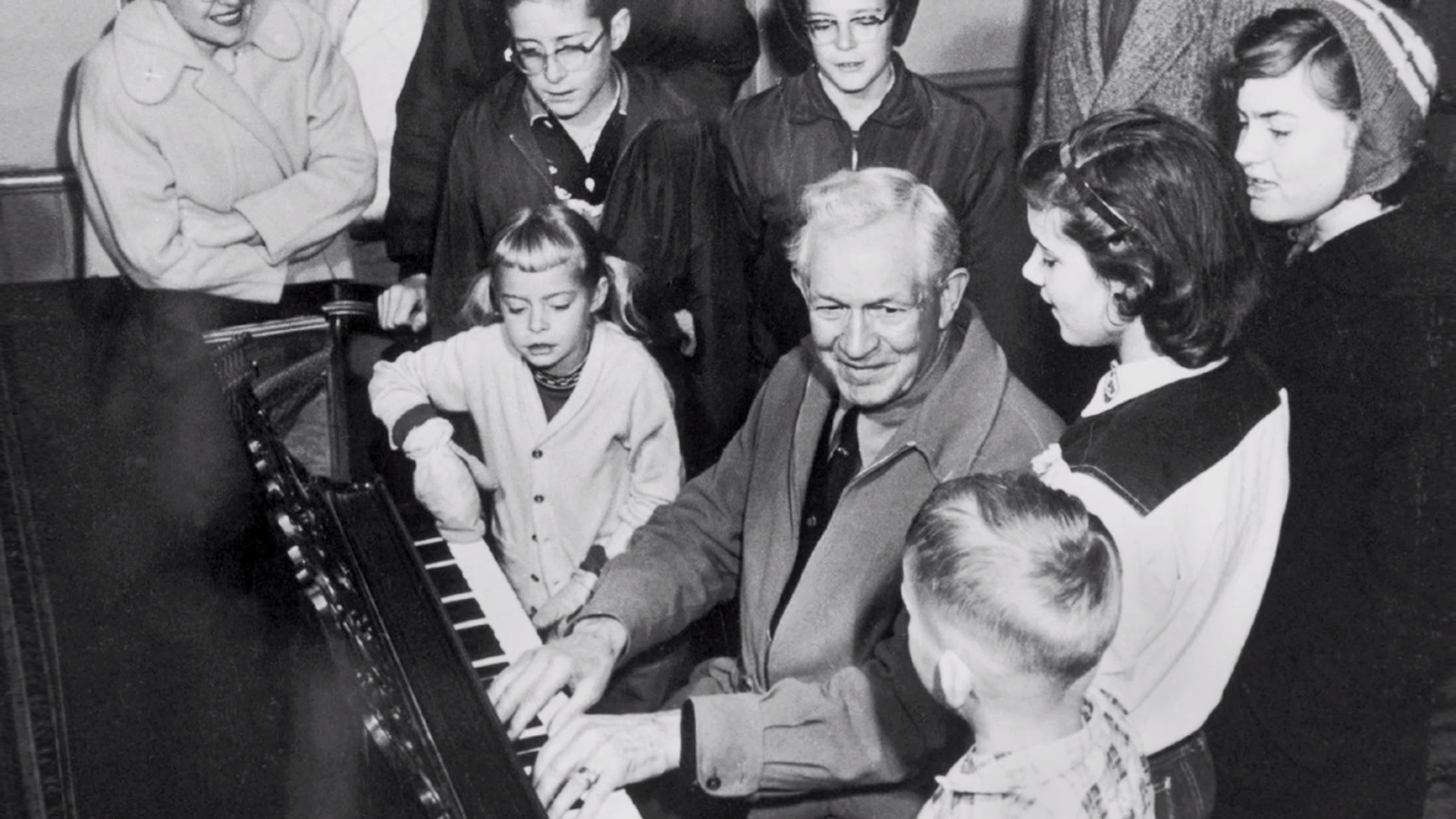 President David O. McKay encouraged the Saints to establish strong families in which love and harmony prevailed based on the application of gospel principles. He is seen here teaching by example the importance of strong family relationships. (Church News)
President David O. McKay encouraged the Saints to establish strong families in which love and harmony prevailed based on the application of gospel principles. He is seen here teaching by example the importance of strong family relationships. (Church News)
Many of the teachings of President Spencer W. Kimball (Church President from 1973 to 1985) centred on the family. He encouraged all young Latter-day Saints to marry and have children. He said, “We call upon all people to accept normal marriage as a basis for true happiness.” He lamented the growing number of divorces and believed that selfishness was a major cause of family break-ups. He regarded abortion as a related evil. “Certainly the terrible sin of premeditated abortion would be hard to justify. . . . We place it high on the list of sins against which we strongly warn the people.” The president also spoke out against the sin of homosexuality, “unisex” attempts to blur the distinction between masculine and feminine, and the practice of couples living together without marriage. Although President Kimball vigorously denounced such evils, he also offered hope to those who had become ensnared in them. This was the prime message of his widely read book, The Miracle of Forgiveness.
President Kimball particularly stressed the importance of the mother’s role: “Motherhood is near to Divinity. It is the highest, holiest service to be assumed by mankind. It places her who honors its holy calling and service next to the angels.”[26]
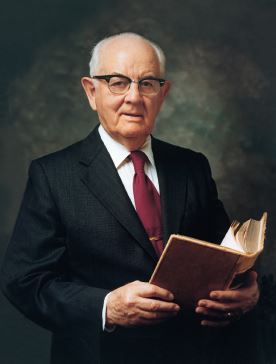 Spencer W. Kimball, while viewed by many as a great missionary-minded president, also warned Latter-day Saints against modern threats to wholesome family life. (IRI)
Spencer W. Kimball, while viewed by many as a great missionary-minded president, also warned Latter-day Saints against modern threats to wholesome family life. (IRI)
Proclamation on the Family
Latter-day Saints view the family as the basic unit on earth as well as in the heavens. In 1995, the First Presidency and the Council of the Twelve Apostles issued a proclamation to all the world responding to current issues and emphasizing the importance of the family. They affirmed that “marriage between a man and a woman is ordained of God,” that “the family is central to the Creator’s plan for the eternal destiny of His children,” and that “the divine plan of happiness enables family relationships to be perpetuated beyond the grave.” They therefore testified that “marriage between man and woman is essential to [God’s] eternal plan.”[27] They insisted that “husband and wife have a solemn responsibility to love and care for each other and for their children. ‘Children are an heritage of the Lord’ (Psalm 127:3). Parents have a sacred duty to rear their children in love and righteousness, to provide for their physical and spiritual needs, and to teach them to love and serve one another, observe the commandments of God, and be law-abiding citizens wherever they live. Husbands and wives—mothers and fathers—will be held accountable before God for the discharge of these obligations.” The Church leaders therefore called on officials of government to support measures that would protect and strengthen families.[28]
Church Organization and Practices
The Church of Jesus Christ of Latter-day Saints as an organization helps its members achieve the goals of gathering spiritually and strengthening families. There is no paid clergy. Rather than employing salaried clergymen, all Latter-day Saints are encouraged to participate in the life of the congregation and render voluntary service, sometimes at a considerable sacrifice of time and effort.
The most important weekly gathering is the “sacrament meeting” in which members partake of emblems recalling Jesus Christ’s atoning sacrifice and renew their commitment to live according to his teachings. Youth and adult members of both genders speak on gospel topics, and others present worshipful musical numbers as individuals or as a choir.
Classes for adults and youth are conducted by the Sunday School, and for children, by the Primary. In priesthood “quorums” and the Relief Society (one of the oldest and largest women’s organizations in the world), men and women respectively study gospel topics, consider their duties as parents, and coordinate plans for giving service to one another or to the broader community. Weekly youth activities are held midweek for young men and young women.
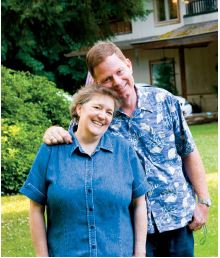 Tom Housholder, who served as bishop (2005–8) in the Port Alberni Ward, Nanaimo British Columbia Stake, with his wife, Marla. Typically loved by members of their flock, bishops are unpaid volunteers (the equivalent of a pastor in many churches), who orchestrate the work of dozens of other volunteers who conduct the programs and activities of the ward, a congregation of three to four hundred people. Smaller congregations called branches have a branch president who performs similar functions. (IRI)
Tom Housholder, who served as bishop (2005–8) in the Port Alberni Ward, Nanaimo British Columbia Stake, with his wife, Marla. Typically loved by members of their flock, bishops are unpaid volunteers (the equivalent of a pastor in many churches), who orchestrate the work of dozens of other volunteers who conduct the programs and activities of the ward, a congregation of three to four hundred people. Smaller congregations called branches have a branch president who performs similar functions. (IRI)
Priesthood Correlation
Over the years, general Church leaders have conducted a thorough review of organizations and activities to ensure that the Church was achieving its mission as fully as possible. In the early 1960s, Harold B. Lee of the Quorum of the Twelve Apostles, under direction of the First Presidency, embarked on such a review. The resulting emphasis came to be known as “priesthood correlation.” Elder Lee concluded that “each organization was to have its specific function, and it was not to usurp the field of the other, which would be like the eye saying to the hand, ‘I have no need of thee.’” In this way the Church would “perform as a perfectly organized human body, with every member functioning as it was intended.”[29] Hence at Church headquarters, councils were formed to define more specifically the role of each organization and to ensure that all key Gospel principles were taught to children, youth, and adults. In each local congregation, a priesthood executive committee and ward (or branch) council brought leaders together to see that all organizations worked harmoniously together in meeting the needs of all families and Church members. These developments of priesthood correlation were directly guided by the First Presidency’s declaration that “the home is the basis of a righteous life and no other instrumentality can take its place or fulfil its essential functions. The utmost the auxiliaries can do is to aid the home in its problems, giving special aid and succor where such is necessary.”[30]
Church leaders in the past had encouraged specific activities to strengthen families. In 1915, for example, the First Presidency admonished parents to conduct a weekly “home evening” to teach the gospel to their children and become more familiar with family needs. “If the Saints obey this counsel, we promise that great blessings will result. Love at home and obedience to parents will increase. Faith will be developed in the hearts of the youth of Israel, and they will gain power to combat the evil influence and temptations which beset them.”[31] President Joseph F. Smith likewise promised, “Not one child in a hundred would go astray, if the home environment, example and training, were in harmony with the truth in the gospel of Christ, as revealed and taught to the Latter-day Saints.”[32]
In 1965, Church leaders, in line with their focus in priesthood correlation on strengthening the family, renewed their emphasis on holding weekly family home evenings. In 1971, they designated Monday for this purpose, directing that no other Church activities be scheduled on that evening. This emphasis and focus applied to members of the Church worldwide, including Canada. In these Church-sponsored home evenings, parents gathered their children around them to teach gospel principles, discuss concerns, make plans for the family, and enjoy recreational activities together.[33] This activity, which frequently ended with a much-enjoyed dessert, served to bind families together and has become one of the pillars of Latter-day Saint family life.
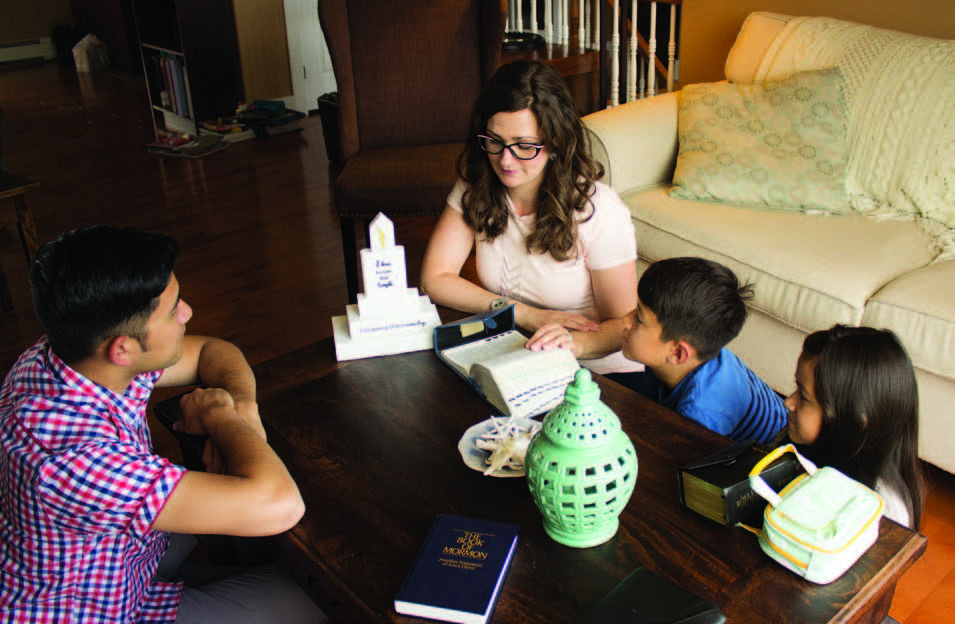
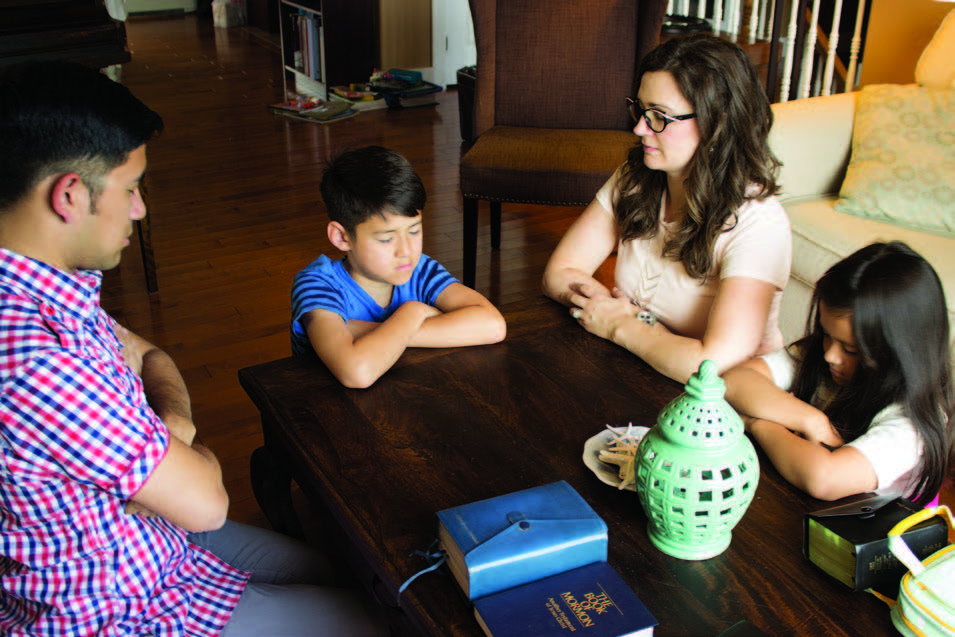
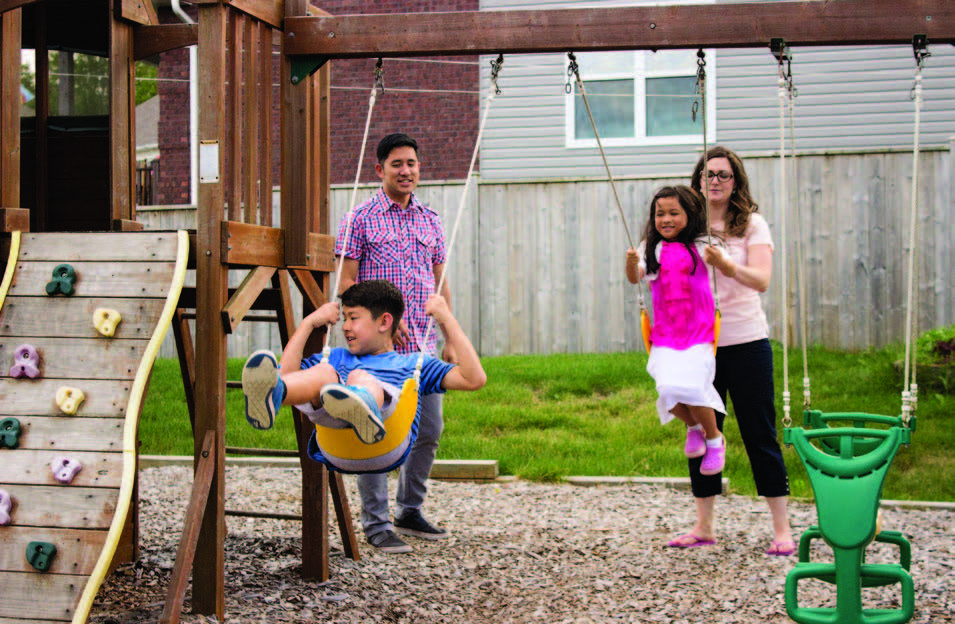 The Sheldon and J. J. Choo family in Dartmouth, Nova Scotia, are enjoying a weekly family home evening with their children, which normally consists of a prayer, a gospel discussion, and a fun activity. Not shown is the dessert, which to the great delight of all, will conclude the evening! Family home evening allows LDS families to share gospel principles, resolve family problems, and draw closer together as a family. Although encouraged earlier by Church leaders, the practice was reemphasized in 1965. (Photos by Samantha Moses)
The Sheldon and J. J. Choo family in Dartmouth, Nova Scotia, are enjoying a weekly family home evening with their children, which normally consists of a prayer, a gospel discussion, and a fun activity. Not shown is the dessert, which to the great delight of all, will conclude the evening! Family home evening allows LDS families to share gospel principles, resolve family problems, and draw closer together as a family. Although encouraged earlier by Church leaders, the practice was reemphasized in 1965. (Photos by Samantha Moses)
Consolidation of Meeting Schedule
During the next several years, Church leaders took several additional steps to simplify and consolidate activities in order to provide more time for families to be together. Church magazines, of which there were previously five, were consolidated into three magazines, one for adults, the Ensign; another for youth, the New Era; and a third for children, the Friend. Measures were taken to improve the quality of teaching in the Church, and since 1972, Sunday School classes for youth and adults have focused on a four-year rotation of the scriptures. Beginning in 1998, adults in priesthood quorums and the Relief Society have studied the teaching of latter-day prophets, which have focused on the doctrinal foundations of the faith.
During most of the twentieth century, Mormons lived a very busy schedule with many activities during the week, giving their lives a very Church-oriented focus. In a typical week, there was Primary for the children on one afternoon, an activity for Young Men and Young Women one evening, and a Relief Society meeting for women on an afternoon or evening, not to mention service projects and numerous fund-raising activities. Still, on other days of the week, the Church sponsored extensive social, cultural, or athletic activities, especially for the youth.
The Scouting program has involved LDS boys ages eight to seventeen. In 1913, the Church became one of the first organizations in the United States to adopt the program of the Boy Scouts of America, and it is still the largest single institutional sponsor of Scouting in North America.[34] In 1914, Scouting was incorporated in Canada by an Act in Parliament.[35] That year, Latter-day Saint woman Louisa Grant Alston of Magrath, Alberta, became Canada’s first female Scoutmaster and was instrumental in spearheading the Scouting movement around southern Alberta.[36] The Church remains a strong supporter of Scouting in Canada, with thousands of young men and leaders participating in the program.[37] These multiple activities, however, meant that families had limited quality time together.
In 1980, Latter-day Saint meetings that had convened at various times on Sundays or at other times during the week were consolidated into a single three-hour block, not only to conserve fuel, but also specifically to provide members more time for individual or family religious activity. This gave families more time to spend together for scripture study and other activities in the home and time to participate more in community affairs.[38] This impact was felt in communities where Latter-day Saints lived fairly close together but was significantly greater in areas where they were widely scattered and hence needed to travel long distances to participate in Church activities. While attendance at most meetings increased and more time was made available for family activities, the consolidation of the meeting schedule nonetheless tended to lessen opportunities for socializing with fellow Church members.[39]
Members who lived at a considerable distance from meetinghouses, as did many in Canada, relished the reduction in travel requirement. In far-flung wards and branches covering vast areas, in which members lived a long way from the meetinghouse (some as much as an hour’s drive or more), the consolidated meeting schedule provided a major relief in travel time and expense.[40]
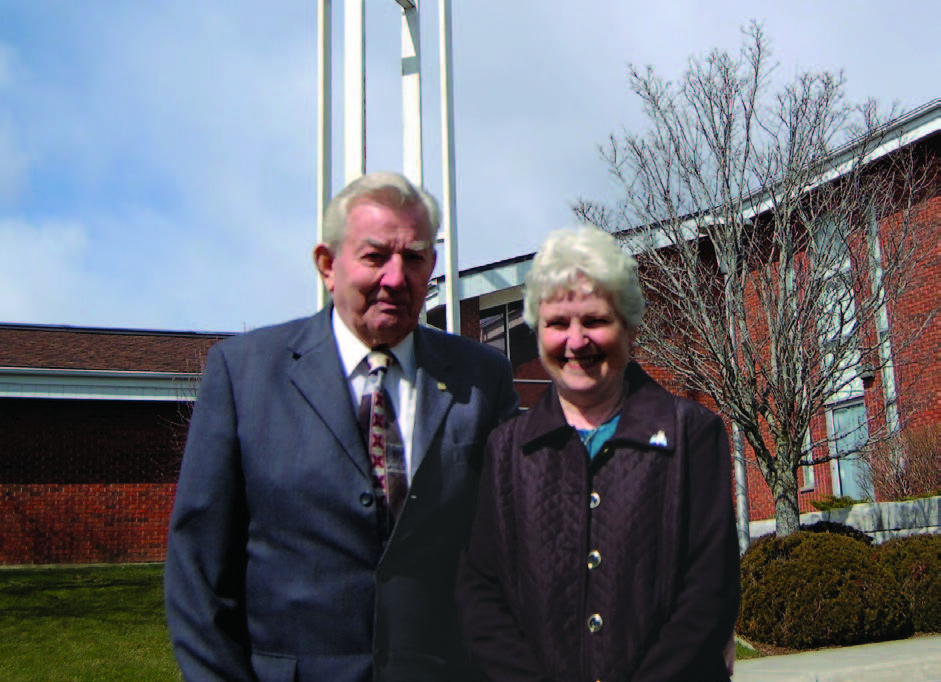 Ruth and Ralph Brown, standing in front of the Kingston, Ontario, meetinghouse. Faithful Latter-day Saints, the Browns have driven more than forty-five kilometres each way to Church meetings and activities for nearly fifty years since their conversion in 1967. “The consolidated meetings has made a huge difference in our travel,” Ruth said.[41] “Years ago before that we would travel to Kingston twice a day.” Ralph passed away in June 2016. (Patricia Whitehead)
Ruth and Ralph Brown, standing in front of the Kingston, Ontario, meetinghouse. Faithful Latter-day Saints, the Browns have driven more than forty-five kilometres each way to Church meetings and activities for nearly fifty years since their conversion in 1967. “The consolidated meetings has made a huge difference in our travel,” Ruth said.[41] “Years ago before that we would travel to Kingston twice a day.” Ralph passed away in June 2016. (Patricia Whitehead)
Mormon Meetinghouses and Fund-Raising
In the twentieth century, as the Church began to be established in cities all across Canada, a dream of each congregation was to have its own meetinghouse for its activities and worship services. Church members assumed a major role in funding these activities and facilities. All faithful Latter-day Saints pay one-tenth of their income as tithing.[42] These funds are sent to Church headquarters to support the Church’s work worldwide. The Saints also refrain from eating two meals each month and contribute the equivalent value or more as “fast offerings” to help the poor. For many years, they also made other contributions to fund the budget for local activities and the welfare program, and to pay their share in erecting new buildings. When a new meetinghouse was needed, general Church funds covered at least 50 percent of the cost (up to 70–80 percent in missions, with less well-established congregations), and the local congregations were asked to raise the balance.[43] Local members made direct contributions to building funds as well as participating in or simply supporting a wide variety of fund-raising projects and activities such as bake sales, car washes, and much more. These fund-raisers had the effect of bringing members together and involving them in the life of the congregation. This in turn strengthened their attachment to the Church and its mission.
Hundreds of Latter-day Saint meetinghouses were thus constructed across the land on this basis to accommodate Church meetings and activities. The floor plan of Mormon meetinghouses is not identical to buildings of other denominations. Latter-day Saint meetinghouses generally include a chapel for worship services; a cultural hall, with nearby kitchen, for banquets, dramatic presentations, dances, sports, and other activities; and a number of classrooms. Brent Roberts, managing director of the Meetinghouse Facilities Department, explained, “The building program of the Church has developed standard plans, which contain key features to facilitate the worship and activity programs of the Church. In addition, the standard plans establish a uniform look and a way for meetinghouses to be built more efficiently and economically.”[44] In 1997, the number of Latter-day Saints worldwide passed the ten-million mark, and for the first time there were more members outside of the United States and Canada than within. Gordon B. Hinckley, who presided over the Church during the period of rapid Mormon growth, affirmed, “We are producing better buildings than have ever previously been constructed in the Church. They combine beauty with great utility. If they look much the same, it is because that is intended. By following tried and tested patterns we save millions of dollars while meeting the needs of our people.”[45] Many LDS meetinghouses were built in phases, starting with a smaller building meeting the needs of a small congregation, but designed to be expanded to include larger accommodations for growing congregations.[46]
During the relatively prosperous 1990s, the Church was able to use general funds to assume more of the expense of constructing meetinghouses. Since the 1990s, general Church funds, supported primarily through tithing, have covered almost all these costs.[47] This lifted from Church members the need to raise funds locally. Fund-raising activities were thus curtailed to a limited number of events to raise funds for Scouting and Young Women camps. One goal was to cut back on activities that would take the Saints away from their families. Thus, the early experience of the Saints with multitudinous fund-raising activities, as described in many of the chapters on the regional development of the Church in Canada, came to an abrupt halt, shifting the focus further from collective activities to a stronger focus on the home.
With the passing of fund-raising activities—except for youth camps—emphasis has shifted to service projects. Gathering food for local food banks has become an activity in the Church from coast to coast.[48]
 Church members in the Edmonton area engaging in a food bank drive. (Walter Meyer)
Church members in the Edmonton area engaging in a food bank drive. (Walter Meyer)
Latter-day Saints have engaged in many other community activities. In August 2015, 120 members of the Regina Saskatchewan Stake gathered, on less than 24 hours’ notice, to fill 2,500 food hampers to aid some of the 13,000 residents of northern Saskatchewan, evacuated from their homes because of widespread fires. This service activity helped forge a strong relationship between the Church and local service organizations.[49] In August 2015, 700 LDS youth in Ontario, largely from the Kitchener-Waterloo area, joined with 350 volunteers from the interfaith community to provide healthy meals for impoverished children in Haiti. During the two-day event, organized by the charitable organization Feed My Starving Children (FMSC), the youth prepared and packaged 280,000 hot meals, enough to give 750 hungry children in Haiti a hot meal every day for a year.[50]
Electronic Communications
Other changes have united Latter-day Saints as a community, but on a much larger geographical scale. Each year in April and October, the Church has held general conferences at its headquarters in Salt Lake City, Utah. Local leaders and some other Church members made the long trips necessary to attend these conferences. Beginning in the 1960s, however, the Church increasingly worked with television stations throughout the United States and Canada, encouraging them to carry one or more conference sessions. Though sporadic, this coverage enabled many Latter-day Saints to view at least part of the conferences from their homes. Beginning in 1952, the Church transmitted the priesthood session of general conference to stake centres by direct wire audio transmission. These provided opportunities for fathers and sons to bond as they travelled to the location where the meeting was received, frequently going out afterwards for some kind of a treat.
As technology developed, it became possible for isolated Church members to view video recordings of general conference. In April 1981, the Whitehorse Branch in Yukon was able to watch a video recording of conference for the first time. The event was a resounding success. According to one Church leader, “The response was fantastic. The Branch President with tears in his eyes said that was the first time he had seen conference in 22 years. For many others it was the first time they had seen the Prophet or members of the Twelve speak. It was a great spiritual boost to that branch.”[51]
In October 1981, Church President Gordon B. Hinckley announced that the Church was building its own satellite uplink facility to transmit general conferences to earth-orbiting communications satellites, and that satellite receiving dishes would soon be installed at stake centres in the United States. The placing of satellite dishes soon extended into Canada and other countries of the world so that in 2006, there were 6,066 Church-owned satellite dishes operating in eighty-three countries. This communications network also enabled Canadian Saints to attend worldwide training meetings and other special events, including closed-circuit broadcasts of general conference held twice annually in Salt Lake City and the dedications of the Palmyra, Winter Quarters, and Nauvoo Temples.[52] In more recent years, the satellite network has made possible multistake conferences (and Canada-wide conferences) broadcasted directly from either a Canadian location or Church headquarters in Salt Lake City to LDS meetinghouses across the country.[53]
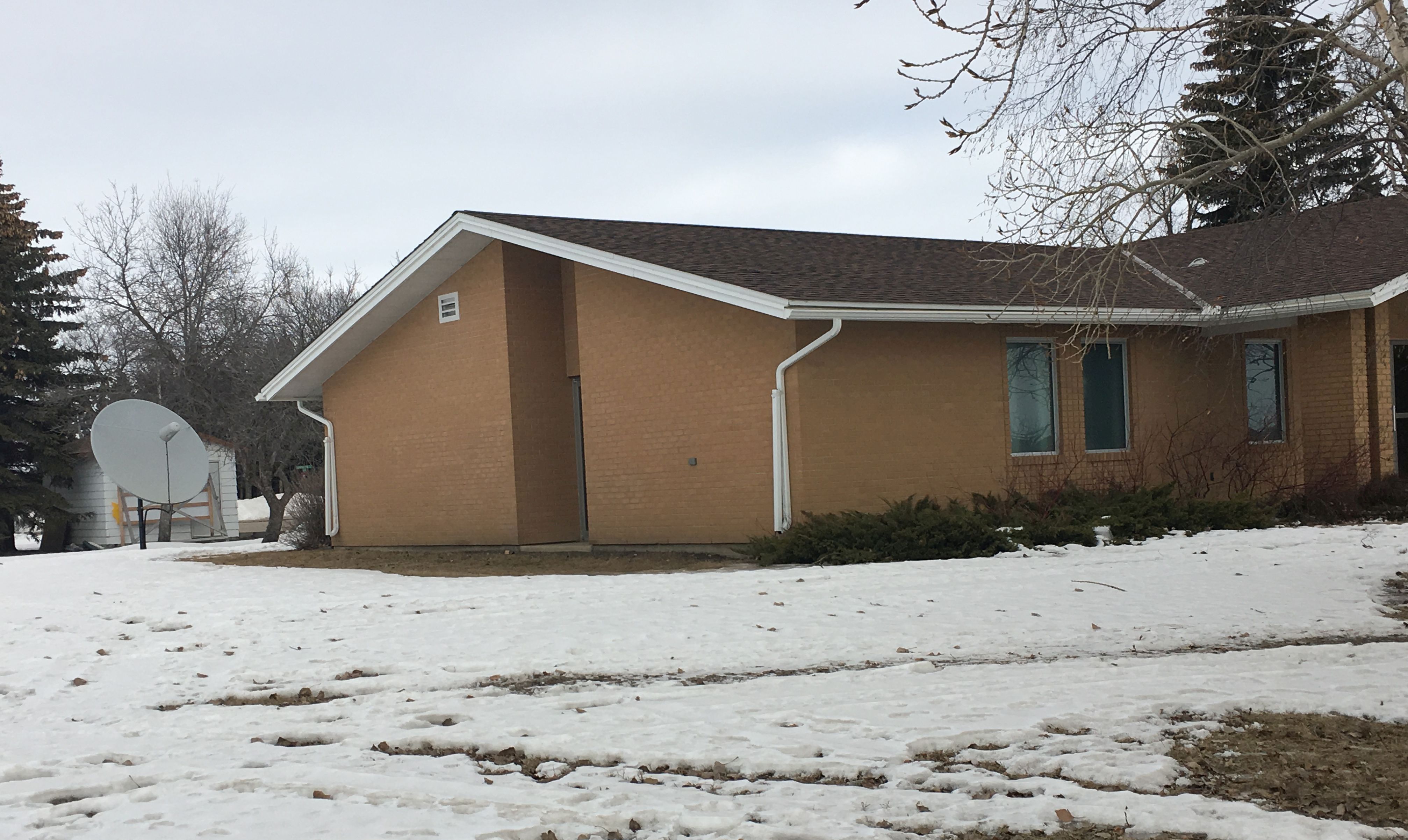 The Church has established an international communication network. Satellite dishes are frequently seen beside Latter-day Saint buildings, as in this photo of the Melfort, Sasakatchewan, meetinghouse, giving distant areas direct access to Church leaders. Melfort is 160 kilometres from the stake centre in Saskatoon. (Beverly Prete)
The Church has established an international communication network. Satellite dishes are frequently seen beside Latter-day Saint buildings, as in this photo of the Melfort, Sasakatchewan, meetinghouse, giving distant areas direct access to Church leaders. Melfort is 160 kilometres from the stake centre in Saskatoon. (Beverly Prete)
In the twenty-first century, BYU Television, the spread of cable, and the internet have enabled the Saints around the world, including those in Canada, to watch complete conference proceedings in their own homes. This has been a huge benefit where families live long distances from meetinghouses with satellite dishes. While this enabled them to become more intimately acquainted with general Church leaders and their teachings, it did remove one more occasion for bringing local congregations together.[54]
The internet has also become an indispensable tool for other Church communication. In addition to providing live streaming of general conferences, the internet has greatly aided communication within large stakes where travel distance was a significant factor. For example, these tools were particularly helpful to leaders of the immense Saskatoon Saskatchewan Stake (organized in 1978), which covered the entire province, and the Longueuil Quebec Stake (2006), which, with expansions, covered not only three wards in Montreal but all of northern and eastern Quebec. In addition to use of the internet as a means of communication among stake officers, many presidency and council meeting could be held from a central location, with those at a distance joining in via teleconference or video teleconference.[55] Church members in central Newfoundland, living more than 300 kilometres from the nearest branch of the Church, use technology to participate in sacrament meetings. Ricks and Sandra Smith, a senior missionary couple serving in Gander in 2017, invited local Church members to their basement every Sunday, where they watched the proceedings of weekly sacrament meetings at the Corner Brook Branch, via Skype.[56]
The Far North has posed particular problems, for which the use of modern communication technology was of immense benefit. For example, it was nearly impossible for members of the Yellowknife Branch to regularly attend stake conferences, leadership meetings, and other events of the Edmonton Alberta North Stake, more than 1,500 kilometres distant. Technology was employed to allow distant members to participate in stake meetings through webcasting and personal video conferencing. In addition, one family in Cambridge Bay, Nunavut, regularly attended the sacrament meetings of the Yellowknife Branch by way of Skype.[57]
Latter-day Saint Temples and the Family
Latter-day Saints believe that the family unit extends into the eternities and that temples are where this relationship is established. In Latter-day Saint temples, couples are married “for time and eternity” rather than just “until death do you part.” The temple “endowment” presents sacred instructions emphasizing our identity as sons and daughters of God, encouraging adherence to high ideals, and showing the path we must follow to return to our Father’s presence. Furthermore, in temples, Latter-day Saints may receive these ceremonies or “ordinances” vicariously in behalf of those who died without the blessings of the gospel. They cite Paul’s reference to early Christians being baptized for the dead.[58]
The first Mormon temples were built in centres of Latter-day Saint gathering in the United States. The latter half of the nineteenth century was dominated by Mormon colonization in the Rocky Mountains. By the end of the century, Latter-day Saints had settled in many areas of the West and had built four LDS temples in Utah, but Mormon settlements had also been established in southern Alberta. The first Canadian temple was dedicated at Cardston, Alberta, in 1923. Church leaders travelled there by special train for the occasion. Never before had such a large number of Latter-day Saint “General Authorities” gathered outside of the United States. The temple’s main rooms were noted for their beautiful hardwoods and intricately inlaid paneling.[59]
Following the dedication of the temple at Cardston, over three decades would pass before another Latter-day Saint temple was built outside of the United States. In 1952, Church leaders made a key decision to build their first “overseas temple” in Europe. During that decade, temples were dedicated in Switzerland, New Zealand, and England. Church President David O. McKay explained the new temples would be smaller so they could be closer to the people. The second Mormon temple in Canada, at Toronto, would not be opened until 1990.
Taking Temples to the People
The pattern of building smaller temples in diverse locations was accelerated under President Gordon B. Hinckley in the period of unprecedented Latter-day Saint growth worldwide during the final years of the twentieth century. For at least two decades, President Hinckley had been concerned with making temple blessings more readily available to the scattered international Saints. “He found himself wondering if there weren’t a way to build smaller, less expensive temples and to build more of them throughout the world.”[60] Following a 1997 visit to the Mormon colonies in northern Mexico, President Hinckley reflected on what the Church could do to help these faithful people. The concept of small temples came into his mind. These temples could be built more quickly and inexpensively and yet include all the essential facilities needed for temple ordinances. He recalled, “I took a piece of paper” and “sketched out the [floor] plan, and turned it over to the architects to refine it.” He concluded: “The concept is beautiful. It’s a very workable concept.”[61]
The first three of these smaller temples, dedicated the following year, had a floor area of only about seven thousand square feet and had just one endowment presentation room. A second group of these temples, which included the Halifax, Regina, Edmonton, and Montreal Temples, were somewhat larger, each with an area of 10,700 square feet and two ordinance rooms. Eventually there would be over sixty of these smaller temples. They would be built on every continent. The Vancouver British Columbia Temple, dedicated in 2010, and the Calgary Alberta Temple, dedicated in 2012, however, were larger midsize temples. A ninth Canadian temple, in Winnipeg, Manitoba, was announced in 2011 but had not yet been constructed as of 2015.[63]
Family History Centres
Latter-day Saints, as indicated, conduct extensive genealogical research to identify deceased loved ones for whom they perform saving temple ordinances. To assist them in this effort, in 1894 the Church established its renowned genealogy library in Salt Lake City. The development of microfilming in mid-twentieth century made available genealogical information from around the world. Microfilms also made the establishment of branch libraries (later called family history centres) practical, the first of these opening in 1964. These were set up in stake centres and many remote smaller chapels across Canada in the decades following. For example, family history centres were established in Thompson, Manitoba, 1988; St. John’s, Newfoundland, 1994; Bella Coola, British Columbia, 1998; Yellowknife, Northwest Territories, 2000; and Chicoutimi, Quebec, 2002. Copies of materials in the main library could be circulated to these family history centres inexpensively as needed. These facilities, to which the general public is invited, have numbered in the hundreds. Today there are over 4,500 family history centres worldwide, including 186 in Canada, stretching from coast to coast.[64]
By the end of 1980, the Church’s Family History Library included 1,024,000 hundred-foot rolls of microfilm, equivalent to 4,927,000 volumes of three hundred pages each.[65] At that time, the library was acquiring records from thirty-six countries.[66] Personnel for managing the Family History Library and the numerous branch libraries came from Church members, with some non-LDS volunteers. Indeed, a large percentage of patrons at family history centres in Canada are not Church members. Family history centres often become a focal point for community outreach and for cooperative efforts with local genealogical societies. For example, the Church in Brampton, Ontario, in cooperation with the Ontario Genealogical Society, has hosted a “One World—One Family” conference annually since 2010, with excellent speakers and workshops on a variety of genealogical research topics from many nations. This popular conference is well attended, and in 2015, the local Member of Parliament came and read a letter from the Prime Minister, Stephen Harper.[67]
In recent years, the Church has digitized extensive genealogical resources and made them available on the internet.[68] Canadians have greatly benefitted from the growing availability of genealogical documents and other information online. They are able to use the resources of the Church’s FamilySearch website and other websites to do family history research from their own homes. Some have done indexing and performed other Church service using their own computers, without leaving the house. While the growing online resources has enabled more Saints to trace their family trees at home, at the same time, it also encouraged interaction as Saints increasingly helped one another with this interesting yet challenging task.[69] With these resources readily available, Canadian Church members, such as Lisa Trodden in Smiths Falls, Ontario, have even served as FamilySearch support missionaries, interacting with individual online patrons worldwide and answering their questions, without leaving their homes.[70]
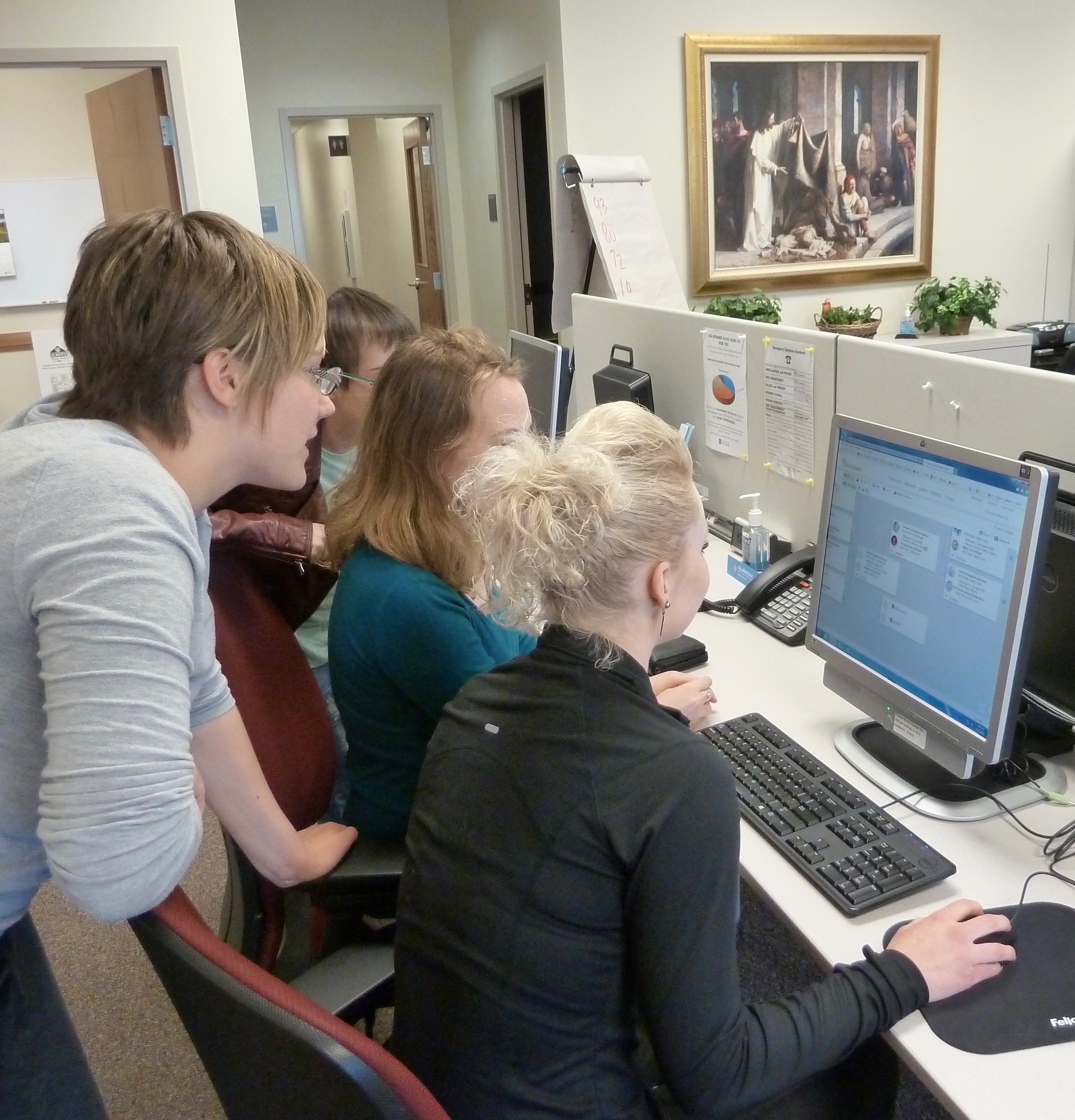 As genealogical sources have become more widely available on the internet, youth, with their computer skills and enthusiasm, have become more and more involved in researching their ancestors. The youth shown here at a family history centre in Lethbridge, Alberta, are engaged in researching family lines on familysearch.org, a research tool available to both Latter-day Saints and the general public. (Darrel Nelson)
As genealogical sources have become more widely available on the internet, youth, with their computer skills and enthusiasm, have become more and more involved in researching their ancestors. The youth shown here at a family history centre in Lethbridge, Alberta, are engaged in researching family lines on familysearch.org, a research tool available to both Latter-day Saints and the general public. (Darrel Nelson)
Conclusions
To understand the history of The Church of Jesus Christ of Latter-day Saints in Canada, one must be aware of changes to general Church policies and programs which have had a significant impact on its development. Notable among such changes have been first the emphasis on gathering to Zion in the nineteenth century and the twentieth century direction for the Saints to stay in their countries of origin and build up the Church there. These policies have shaped the entire early history of the Church in eastern Canada and the subsequent history of the Church throughout the country in the twentieth and twenty-first centuries.
While the eternal nature of the family has always been fundamental to Mormon theology, in the early 1960s, the Church placed greater emphasis on strengthening the family, beginning with priesthood correlation. This emphasis has served as a corrective to the general decline in family values over the last fifty years. Church programs were integrated and streamlined to strengthen the home. Family home evening, a program dating from 1915, was reemphasized, and Monday night was reserved uniquely for it. The focus continued. In the 1980s, the meeting schedule was consolidated into a three-hour block, partly to reduce fuel costs but also to strengthen the family by making more family time available. And in the 1990s, the extension of general Church funding to the building of new meetinghouses and the operation of Church programs reduced to a bare minimum the fund-raising activities that had characterized so much of the local Church activity in the twentieth century, providing an additional increment of family time. In the last decades of the twentieth century, numerous meetinghouses were outfitted with family history centres to enhance family history research, and with satellite dishes, which further reduced travel. The transformation of The Church of Jesus Christ of Latter-day Saints from a community-oriented to a family-focused institution has been integral to the Canadian experience.
Mormon temples, local meetinghouses, and the activities conducted in them are intended to assist the Saints in their quest for eternal life and in their mission of establishing Zion on earth. After President Hinckley introduced the concept of building smaller temples in 1997, Canada became the beneficiary of six new gleaming temples, stretching from coast to coast, with one yet to be built. These temples strengthen families, as Latter-day Saints enter them to begin marriage with the mindset that this relationship must not fail but endure for eternity. In the early twenty-first century, developments in the world have tended to erode the role of traditional families or even threaten their existence. Latter-day Saints regard the programs of their Church and the inspired teachings of their leaders as bulwarks to protect the family and prolong its divine place as the cornerstone of society.
Notes
[1] Brent L. Top, “Jesus Christ and the Plan of Salvation,” in The Mormons: An Illustrated History of The Church of Jesus Christ of Latter-day Saints, ed. Roy A. Prete (London: Merrell, 2013), 39.
[2] Brent L. Top, “Jesus Christ and the Plan of Salvation,” 39.
[3] Joseph Smith, History of the Church, 5:423.
[4] Joseph F. Smith, in Conference Report, April 1901, 69.
[5] Millennial Star, 15 September 1921, 585.
[6] Canada Toronto East Mission Manuscript History and Historical Reports (hereafter CTEM), 1 March 1923, box 1, v. 1, part 2, folder 2, Church History Library, Salt Lake City (hereafter CHL), LR 6520 2.
[7] CTEM, 1 August 1923, box 1, v. 1, part 2, folder 2, CHL, LR 6520 2.
[8] Regina Branch General Minutes, folder 1, 19 May 1935, 104, CHL, LR 7399 11.
[9] Statistics supplied by the Membership Department indicate that there were 11,068,861 Latter-day Saints worldwide, of whom 5,367,338 lived in the United States and Canada.
[10] See chapter, Darrel Nelson, “Southern Alberta, The Ongoing Mission,” herein.
[11] The author has tracked the birthplace of stake leaders he has met personally or whose appointments are announced in the Church News.
[12] Greg Melchin, interview by Richard Cowan, 12 April 2012.
[13] For a good statistical overview, see Statistics Canada, “Fifty Years of Families in Canada, 1961 to 2011,” Statistics Canada, https://
[14] John M. Bumstead, The Peoples of Canada: A Post-Confederation History (Don Mills, ON: Oxford University Press, 2004).
[15] Timothy M. Smeeding, Sheldon Danziger, and Lee Rainwater, “Child Well-Being in the
West: Towards a More Effective Anti-Poverty Policy,” in Child Poverty and Deprivation in the
Industrialized Countries, 1945–1995, ed. Giovanni Andrea Cornia and Sheldon Danziger
(Oxford: Clarendon Press, 1997), 370; Raghubar D. Sharma, “Pre-Marital and Ex-Nuptial Fertility (Illegitimacy) in
Canada, 1921–1972,” Canadian Studies in Population 9 (1982): 4.
[16] Bryan D. Palmer, Canada’s 1960s: The Ironies of Identity in a Rebellious Era (Toronto: University of Toronto Press, 2009).
[17] Nicholas Eberstadt and Barbara Boyle Torrey, “The Northern American Family Divide,”
American Enterprise Institute, http://
fertility-divide/ ; Statistical Abstract of the United States, 1995, 832,
https://
November 1995, 102.
[18] Sharon Jayson, “Out-of-Wedlock Births on the Rise Worldwide,” USA Today, 13 May 2009,
http://
number had skyrocketed to 63 percent. “Quebec Separatists: Marriage Becomes a Formality Many Can Live Without,” Chicago Tribune, http://
http://
[19] “Divorce and suicide rates, per 100,000, Canada, 1950 to 2008,” http://
[20] “Induced Abortions in Hospitals and Clinics, by Area of Report and Type of Facility
Performing the Abortion, Canada, Provinces and Territories, *Terminated*”, Statistics
Canada, http://
Canada Timeline,” www.abortionincanada.ca/
[21] Canadian Institute for Health Information, https://
[22] David Kimmel and Daniel J. Robinson, “Sex, Crime, Pathology: Homosexuality and
Criminal Code Reform in Canada, 1949–1969,” Canadian Journal of Law and Society 16, no. 1
(2001): 147–65. The decriminalization of homosexuality took place as a part of Pierre
Trudeau’s Omnibus Bill of 1969, in which abortion was also decriminalized.
[23] Peter W. Hogg, “Canada: The Constitution and Same-Sex Marriage,” International Journal of Constitutional Law 4, no. 4 (2006): 712–21.
[24] David O. McKay, in Conference Report, April 1964, 5.
[25] Teachings of Presidents of the Church: Harold B. Lee (Salt Lake City: The Church of Jesus Christ of Latter-day Saints, 2000), 134.
[26] In Conference Report, April 1974, 7–9; or Ensign, May 1974, 6–8.
[27] “The Family: A Proclamation to the World,” Ensign, November 1995, 102.
[28] “The Family: A Proclamation to the World,” 102.
[29] Harold B. Lee, in Conference Report, September 1961, 77–79.
[30] Harold B. Lee, Conference Report, October 1962, 72.
[31] James R. Clark, comp., Messages of the First Presidency of The Church of Jesus Christ of Latter-day Saints, 6 vols. (Salt Lake City: Bookcraft, 1965–75), 4:338, 339.
[32] Joseph F. Smith, Gospel Doctrine (Salt Lake City: Deseret Book, 1986), 302.
[33] Clark, Messages of the First Presidency, 4:338.
[34] Jason Swensen, “A Century of Honor to Commemorate 100 Years of LDS Scouting,” Church News, 15 September 2013, 6.
[35] “Scouts Canada History” www.scouts.ca.
[36] Irrigation Builders, (1974), 370, quoted in William Ray Alston, “Mother of Canadian Scouting” in Women of
Faith, vol. 3.
[37] “Scouting in Canada”, Mormon News Room Canada, http://
[38] Hal Knight, “Meeting Schedule Approved,” Church News, 2 February 1980, 3.
[39] Personal observations of the author.
[40] See for example, chapters, Walter C. Meyer, “Edmonton and North,” David Ripley Ross, “The Atlantic Provinces,” herein.
[41] Ruth Brown, email to Patricia Whitehead, 11 June 2016 (forwarded to Roy A. Prete, 11 June 2016).
[42] Malachi 3:8–10
[43] “Policy for Financing Local Units to Change,” Church News, 25 November 1989, 3. In stakes, the percentage of local participation was higher. For example, the local share for the construction the Red Deer meetinghouse in the Calgary Stake in the early 1950s was 50 percent. (Meyer, “Edmonton and North,” herein)
[44] Quoted in Prete, The Mormons, 67.
[45] Quoted in Prete, The Mormons, 67.
[46] Personal information of author, confirmed by that of editor, Roy A. Prete.
[47] Church News, 25 November 1989, 3. See also Richard O. Cowan, The Latter-day Saint Century (Salt Lake City: Bookcraft, 1999), 264. In this way, the quality of buildings and programs in more or less affluent areas is more consistent. The discontinuance of major fundraising also served to forestall further questioning of the Church’s tax-exempt status, which was beginning to become an issue not only in the US but also in Canada.
[48] Information from Roy A. Prete, 6 January 2017.
[49] “Regina Members Support Northern Fire Relief Efforts,” Canada.lds.org, August 2015, accessed 27 April 2016.
[50] “Youth Partnership Creates 280,000 Life-Saving Meals,” Canada.lds.org, August 2015, accessed 27 April 2016.
[51] Letter, Bernell L. Christensen to Douglas T. Snarr, 21 April 1981, Alaska Anchorage Mission annual historical reports, box 1, folder 2, CHL, LR 14452 3.
[52] James B. Allen, “Technology and the Church: A Steady Revolution,” Deseret News 2007 Church Almanac (Salt Lake City: Deseret News, 2007), 136–37.
[53] See chapter, Doig and Olsen, “Crossing the 49th Parallel,” herein.
[54] Cowan, Latter-day Saint Century, 188.
[55] See chapters, Svenson, “Saskatchewan” and G. Eric and Catherine Jarvis, “Quebec,” herein.
[56] Ricks Smith, email to Becky Doig, 8 March 2017.
[57] Stake History interview, 20 August 2013, Edmonton Alberta North Stake annual historical reports, folder 2013, CHL, LR 378089 3.
[58] See 1 Corinthians 15:29.
[59] Richard O. Cowan, Temples to Dot the Earth (Springville, UT: Cedar Fort Inc., 2011), 143.
[60] Sheri L. Dew, Go Forward with Faith: The Biography of Gordon B. Hinckley (Salt Lake City: Deseret Book, 1996), 325.
[61] Dell Van Orden, “Inspiration came for smaller temples on trip to Mexico,” Church News, 1 August 1998, 3, 12.
[62] For a full biography, see Dew, Go Forward with Faith.
[63] Temple Facts,” Church News, 4 November 2012, 5.
[64] Canada, Facts and Statistics, www.mormonnewsroom.org, consulted 27 April 2016; Church Directory of Organizations and Leaders (CDOL), for places cited, consulted 28 April 2016.
[65] James B. Allen, Jessie L. Embry, and Kahlile B. Mehr, Hearts Turned to the Fathers: A History of the Genealogical Society of Utah, 1894–1994 (Provo, UT: BYU Studies, 1995), 281; Church News, 18 January 1964, 8–9 and 26 April 1969, 12.
[66] “1980 Statistics,” Church News, 11 April 1981, 22.
[67] “ʻOne World—One Family’ Unites 300 Family History Enthusiasts,” Canada.lds.org, September 2015, consulted 27 April 2016.
[68] Kip Sperry, “Family History and Genealogy,” in Prete, The Mormons, 121–25.
[69] Information provided by Carma T. Prete, 28 April 2015.
[70] Lisa Trodden, telephone interview with Carma Prete, 7 January 2017.
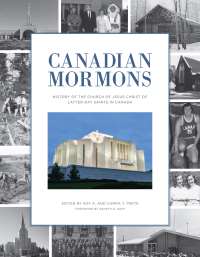
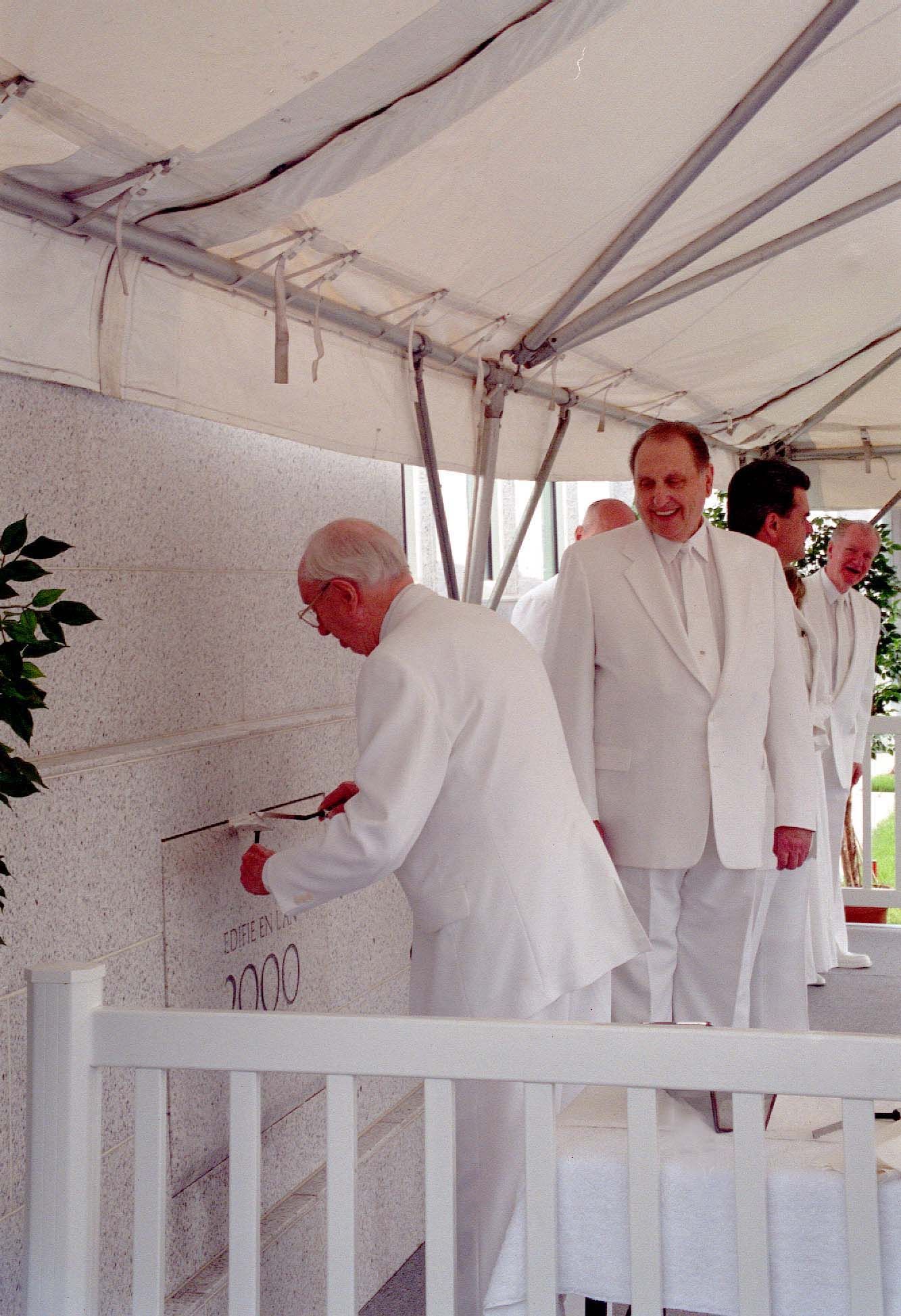 President Gordon B. Hinckley sealing up the cornerstone at the dedication of the Montreal Quebec Temple in June 2000. President Thomas S. Monson, first counselor in the First Presidency, who had opened French-speaking Quebec for missionary work in 1961 while president of the Canadian Mission, is visibly pleased with the occasion.
President Gordon B. Hinckley sealing up the cornerstone at the dedication of the Montreal Quebec Temple in June 2000. President Thomas S. Monson, first counselor in the First Presidency, who had opened French-speaking Quebec for missionary work in 1961 while president of the Canadian Mission, is visibly pleased with the occasion.